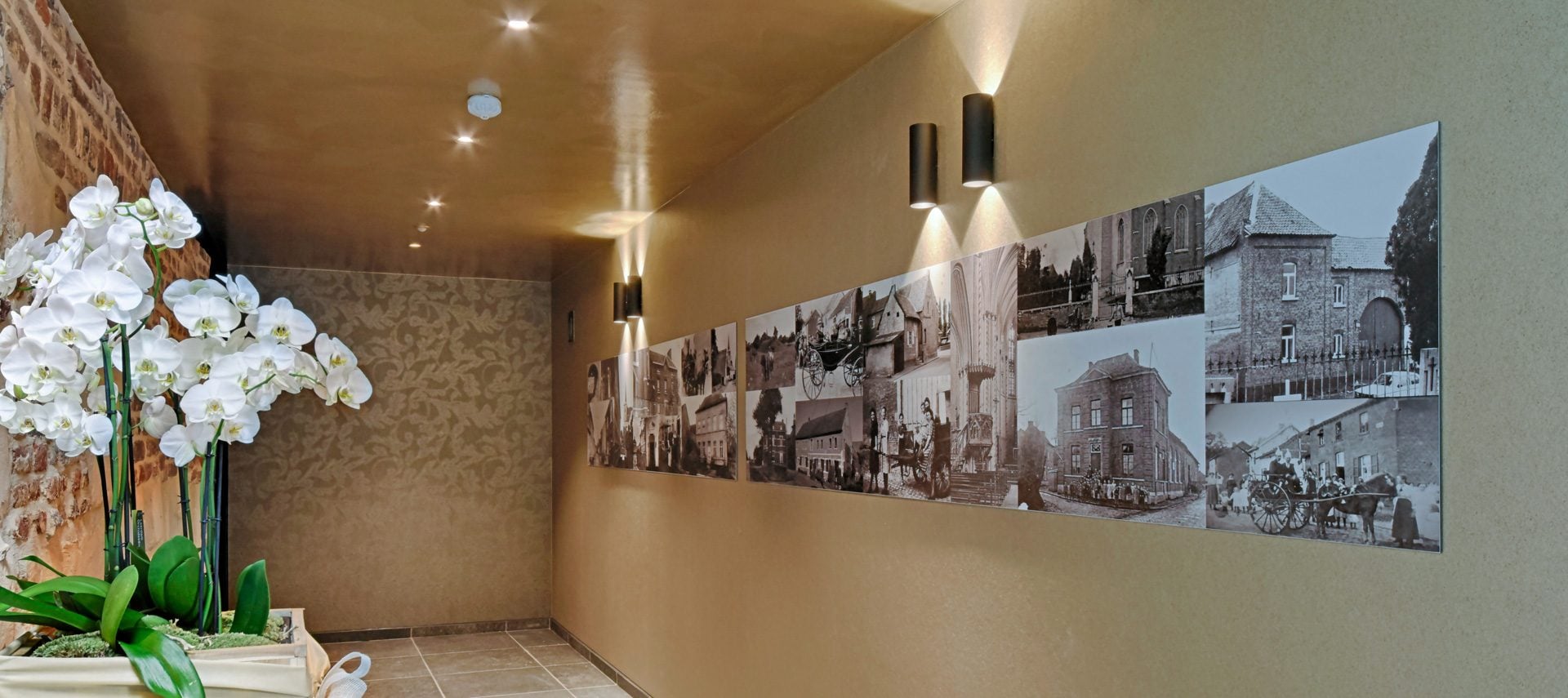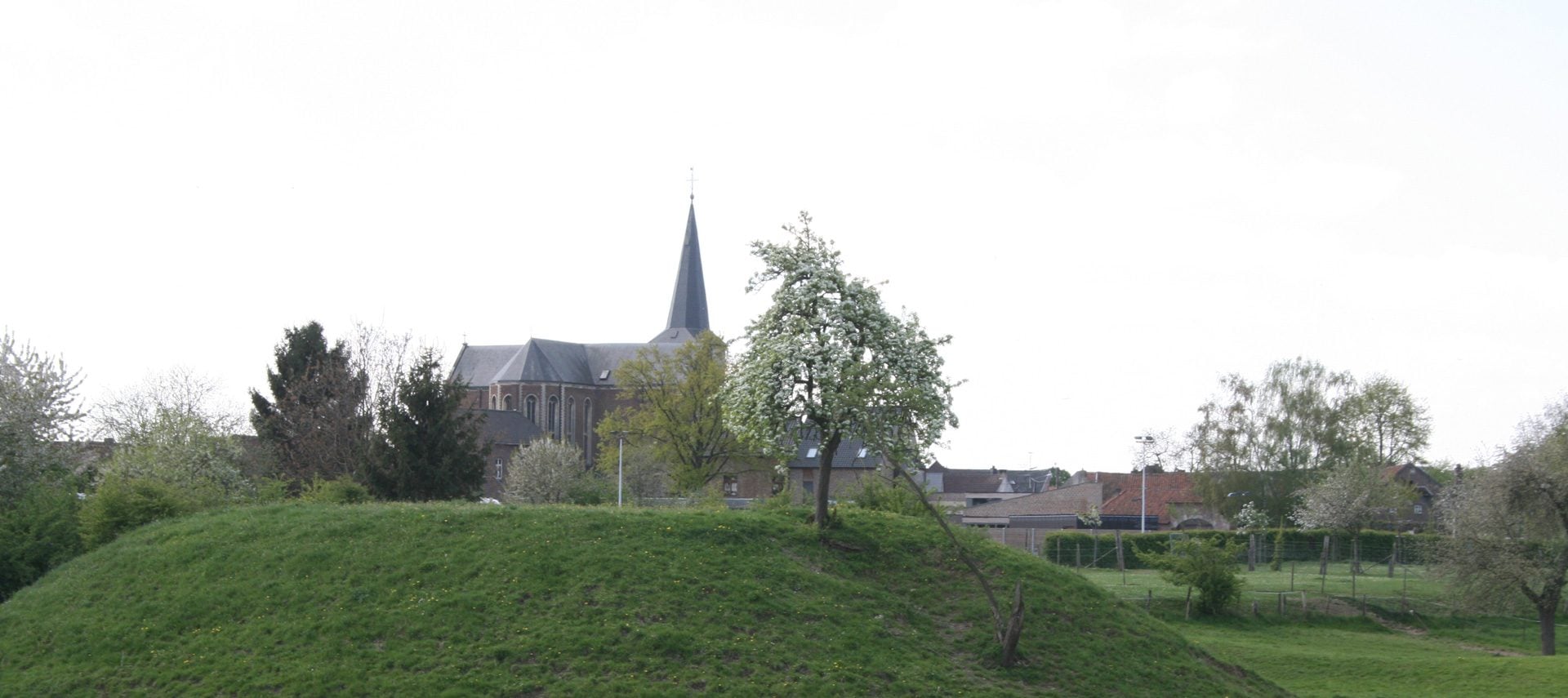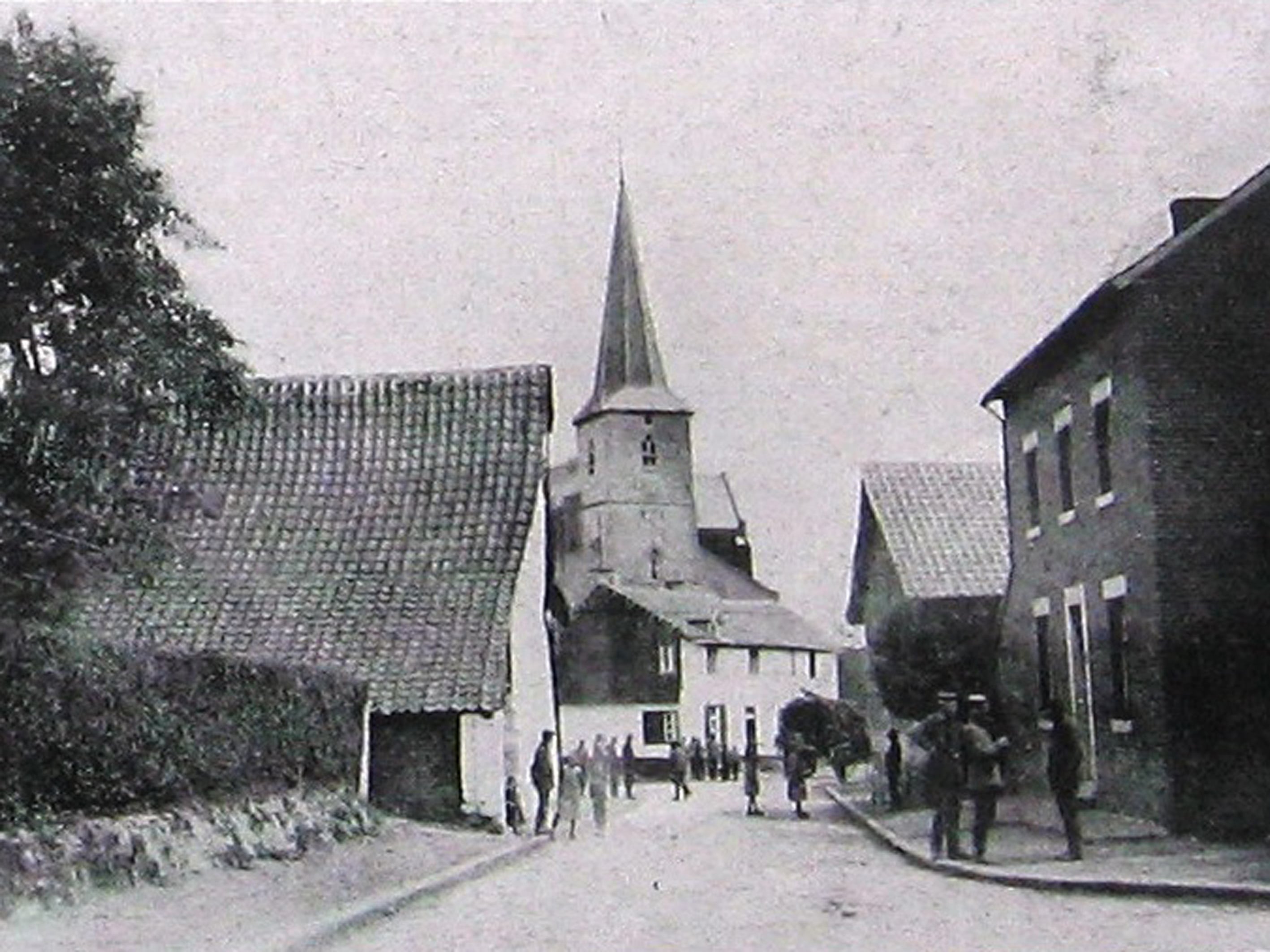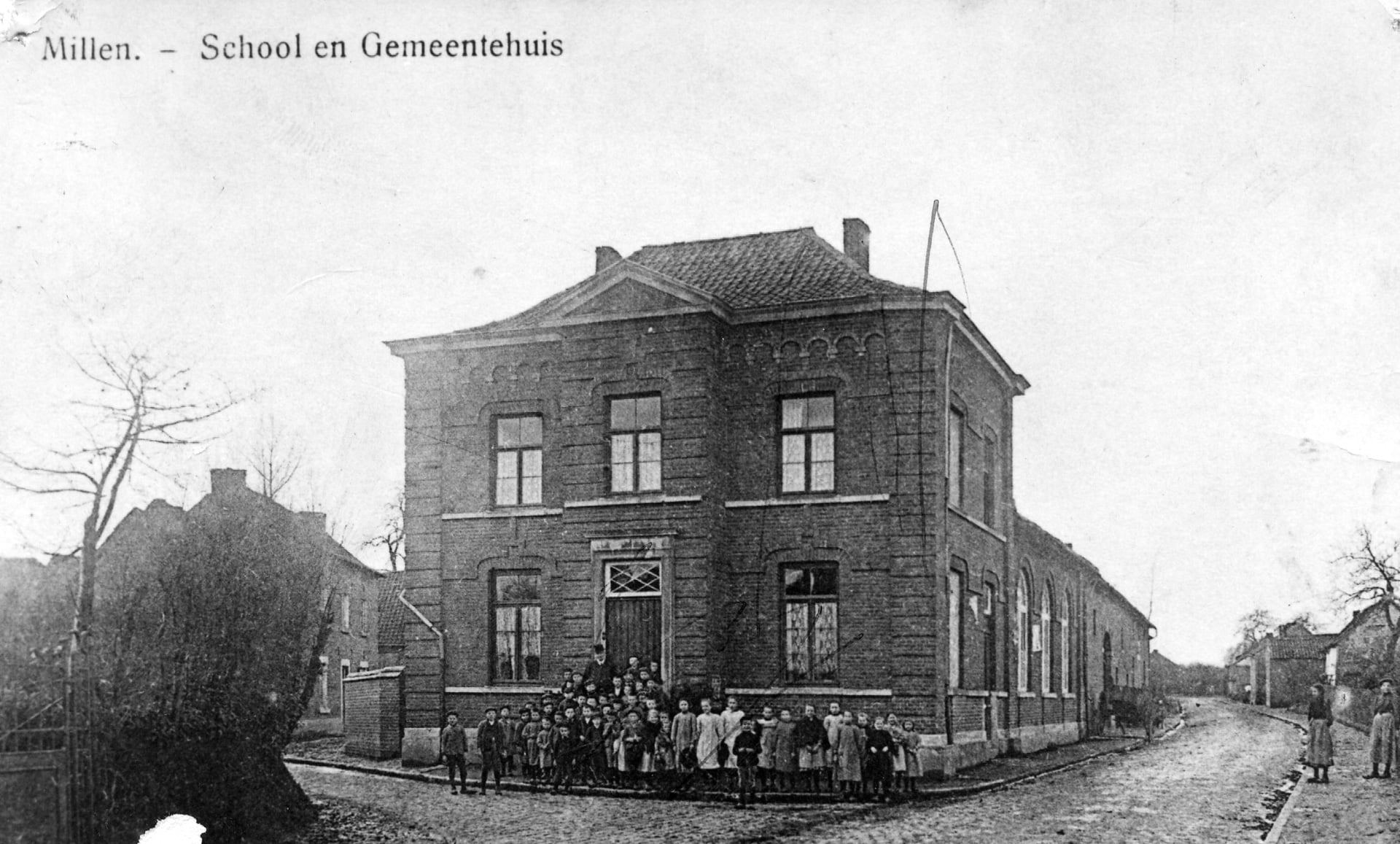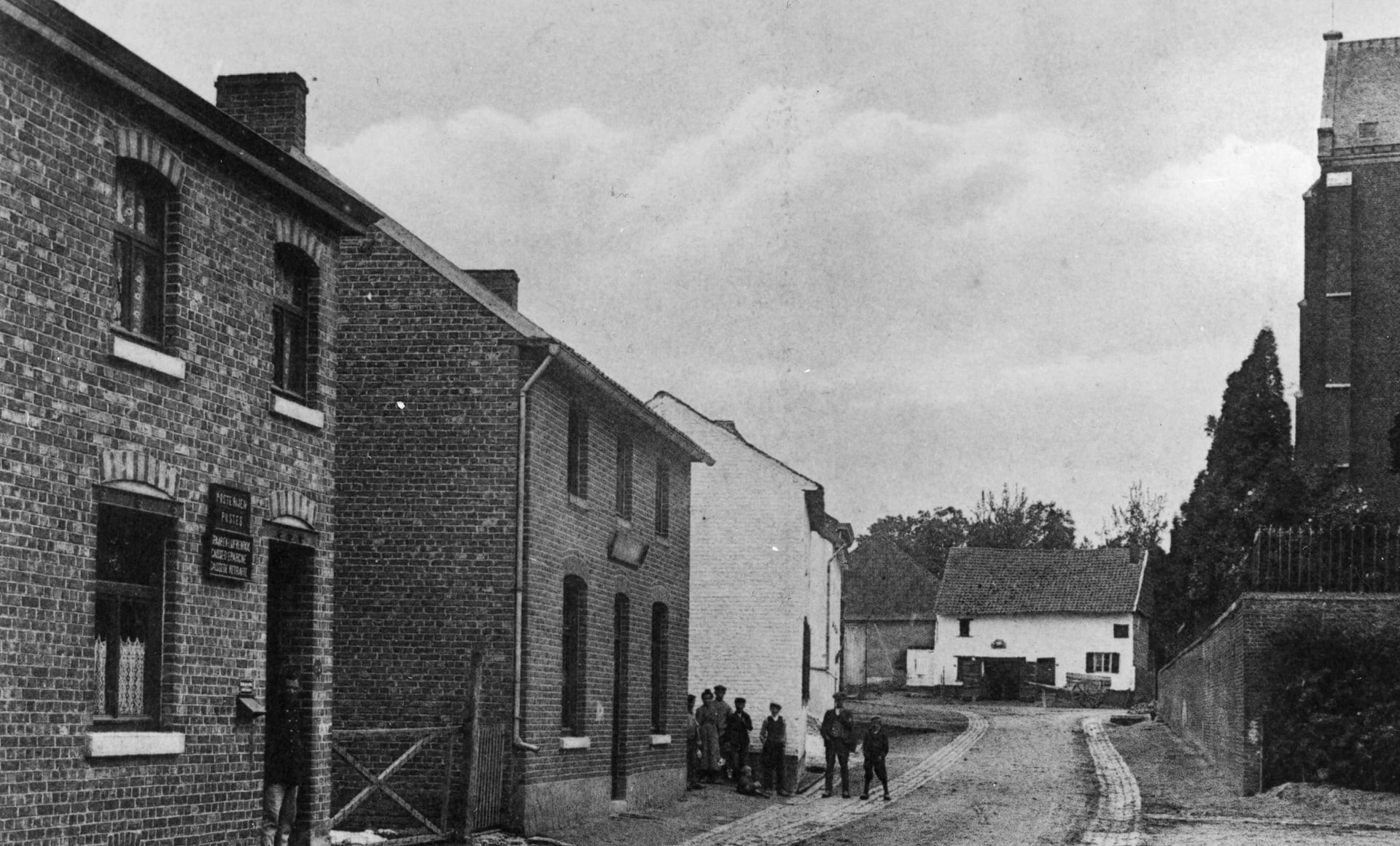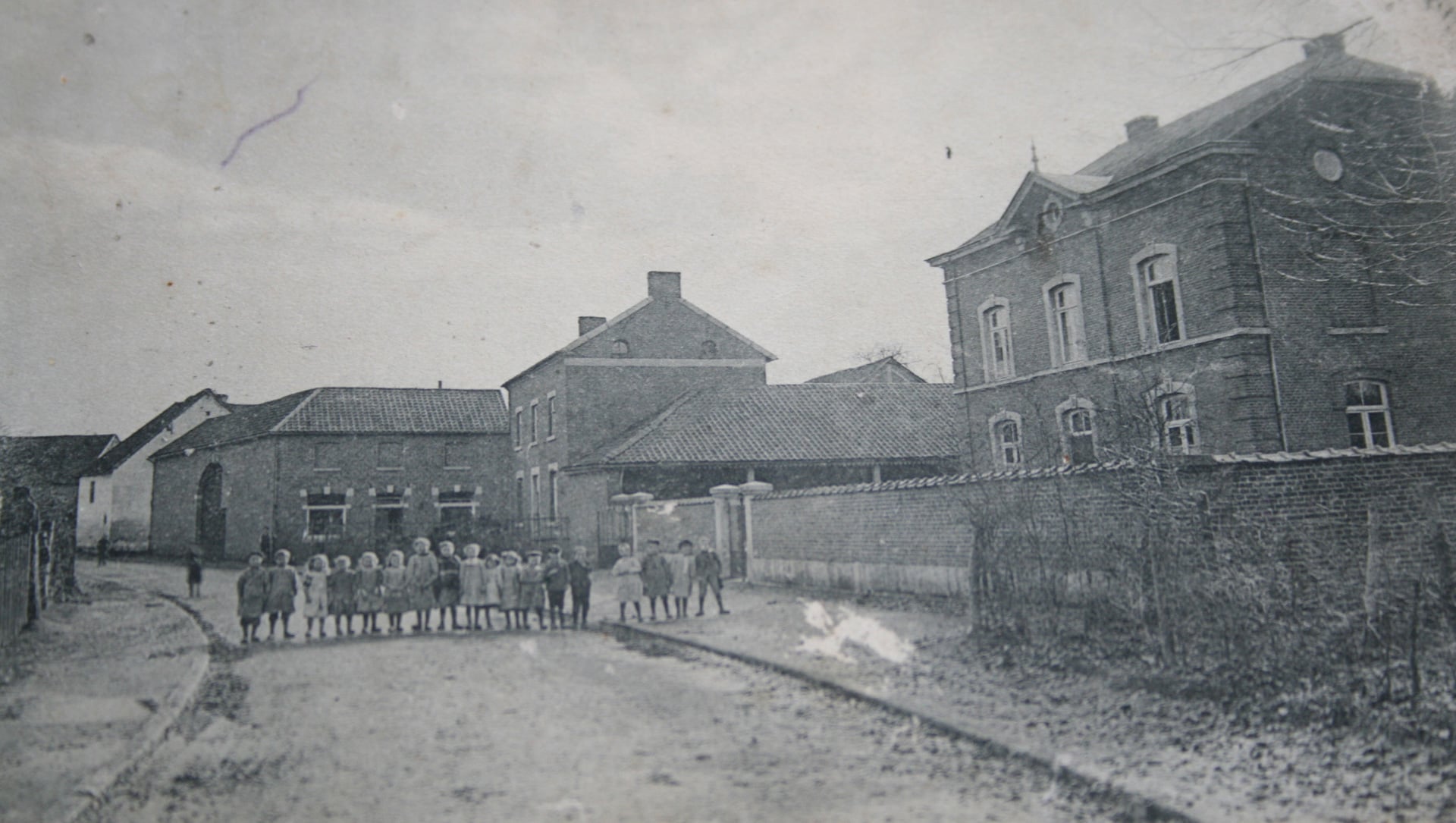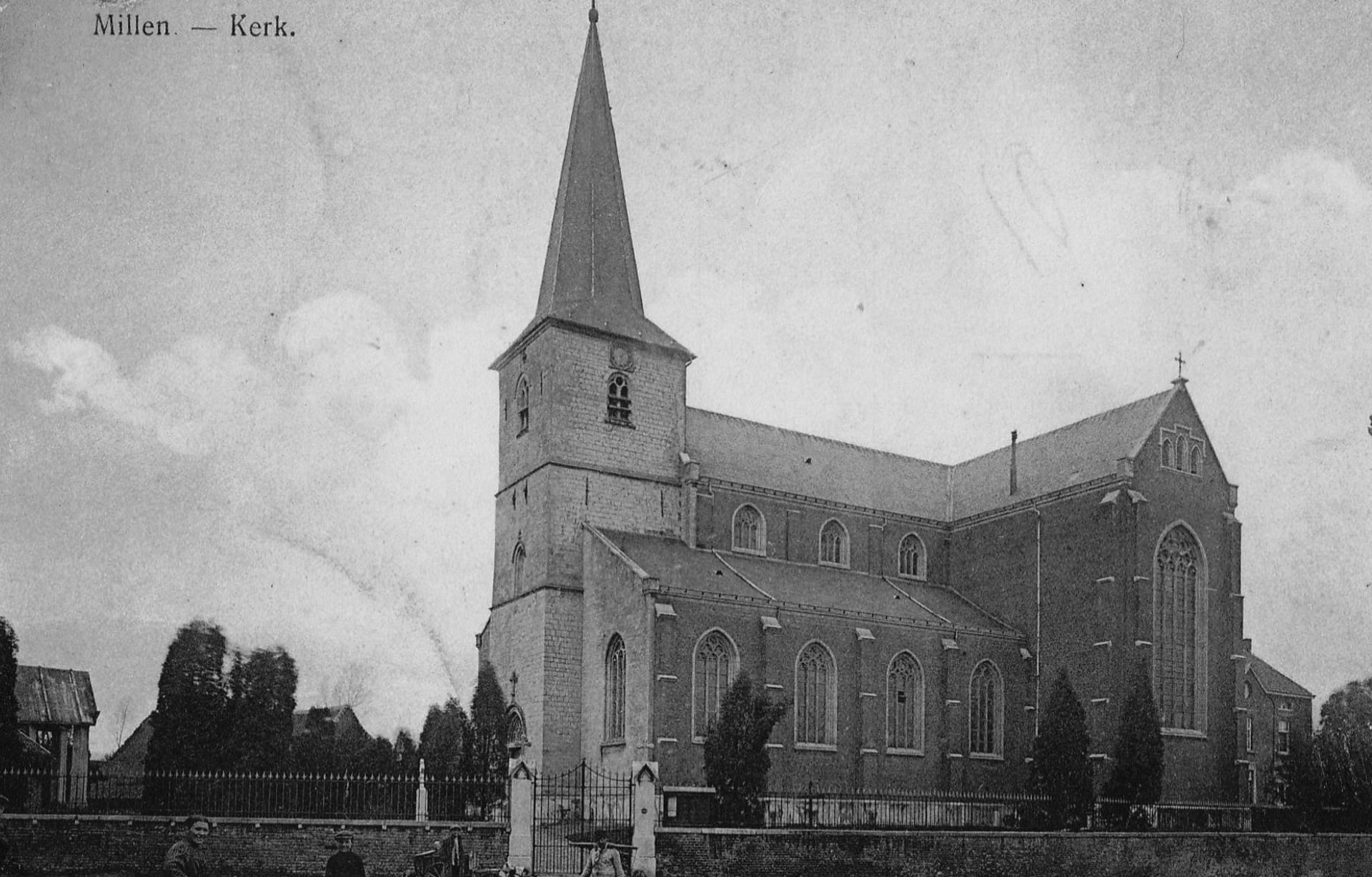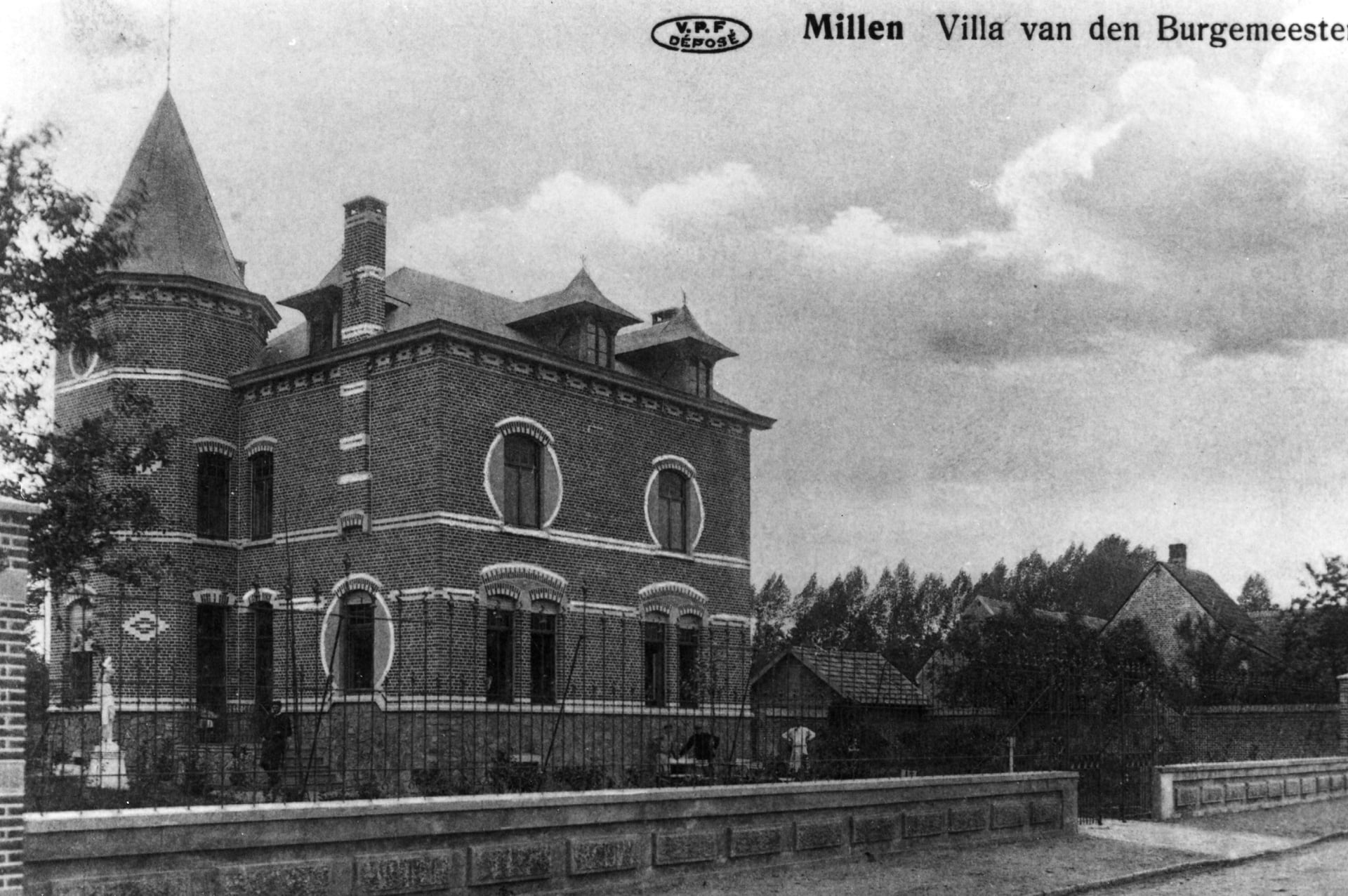History
Reports on church attendance under the Ancient Régime and other church archives provide information on the lodging of the parson.
In 1613 there was no parsonage in Millen. The parson lived in the old church along the church porch. There was however an agreement between the parson and the municipality to build a new parsonage on the churchyard, but the religious authorities of the episcopal principality of Liège did not agree with this plan.
In 1624 there was a parsonage on the churchyard next to the church tower by the side isle as you entered the churchyard, however.
In 1658 the parsonage was on the churchyard close to the church, according to the report. The parson even had a vegetable garden at the end of the churchyard. According to the reports of 1712, there was a small parsonage and garden on the churchyard, together with a shed for the grain tithes of the parson and the church administration.
The register of the Deliberations of the municipal council of Millen 1819-1841 contains the minutes of the meeting of 1 June 1838 concerning the budget allocations intended for the construction of the new parsonage on land owned by the municipality of Millen.
According to the church archives, the current parsonage of Millen was built in 1841 to the east of the then church for a cost of 7,108 francs. The plans were presumable signed by provincial architect Jaminé. The architectural style has neoclassical characteristics and is also known as “provincial style” because many public buildings from the 19th and 20th century show the same characteristics. The input of the architects of the provincial government apparently had something to do with this. Oswald Robijns, pastor of Millen from 1910 to 1938, was a historian and conducted extensive archival research. He mentions in his personal notes a copy of an archival document dated 5 July 1841 with the detailed revenues and expenditures that were booked for construction of the current parsonage in 1841.
The parsonage is mentioned in the ‘Atlas of the local roads in Millen’ of 1844 in Detail Plan no. 5, Section B, cadastral district ‘Village,’ serial number 247, section number 1372, with the municipality of Millen as owner. The parsonage and grounds are located at the intersection of Road no. 19, the Daalstraat, now St.-Stefanusstraat, and Road number 22, the Kerkstraat, Tikkelsteeg. The municipality of Millen owns other plots adjoining this one: plot serial number 246, section number 1371, garden, the current garden, and plot serial number 248, section number 1373, the churchyard. This churchyard was far smaller at the time than the churchyard that exists today. Finally, another plot of land, serial number 249, section number 1375, a building, situated at the entrance of the churchyard, has since disappeared.
According to the appended plan, the then church was smaller than the current one. In 1841, there was an open area between the parsonage and the chorus of the old church before 1860. Wall remains of the choir of the old church were discovered during excavation works to install the underground fuel oil storage tank in 2001. The location corresponded with the old plan of 1844. The new church was the built in 1861 between the old church tower and the existing parsonage of 1841. The choir of the new church was built against the parsonage.
The current parsonage is situated at the intersection Sint-Stefanusstraat and Tikkelsteeg.
